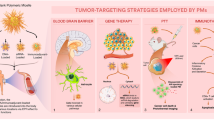Abstract
Mitochondrial drug delivery systems require development of highly selective mitochondria-targeting carriers. In this study, we report that mitochondria targeting sequence (MTS)-hybrid cationic oligopeptide, MTS-H3R9, shows the dual role of a mitochondria targeting vector along with anticancer effect for cancer therapy. In cytotoxicity assays, MTS-H3R9 was shown to be more effective than MTS. MTS-H3R9 showed significant cell penetration and internalization activity compared to that of MTS along with more efficient escape from lysosome to the cytosol. We showed efficient targeting of MTS-H3R9 to mitochondria in HeLa cell line. Furthermore, we exhibited anticancer agent properties that mitochondrial-accumulated MTS-H3R9 caused cell death by reactive oxygen species generation and loss of mitochondrial membrane potential. MTS-H3R9 exhibited dramatically increased anticancer activity in 3D spheroids as well as in a 2D culture model. We demonstrated that MTS-H3R9 provides dual potentials both as a vehicle for targeted delivery and as a cancer treatment agent for therapeutic applications.

Similar content being viewed by others
References
A. Jurj, C. Braicu, L. A. Pop, C. Tomuleasa, C. D. Gherman, and I. Berindan-Neagoe, Drug. Des. Devel. Ther., 11, 2871 (2017).
C. Y. Zhao, R. Cheng, Z. Yang, and Z. M. Tian, Molecules, 23, (2018).
E. Zhang, C. Zhang, Y. Su, T. Cheng, and C. Shi, Drug Discov. Today, 16, 140 (2011).
O. C. Farokhzad and R. Langer, ACS Nano, 3, 16 (2009).
N. P. Truong, M. R. Whittaker, C. W. Mak, T. P. Davis, Expert. Opin. Drug Deliv., 12, 129 (2015).
S. Biswas and V. P. Torchilin, Adv. Drug Deliv. Rev., 66, 26 (2014).
R. J. Youle and A. M. van der Bliek, Science, 337, 1062 (2012).
L. L. Lackner, BMC Biol., 12, 35 (2014).
S. Grandemange, S. Herzig, and J. C. Martinou, Semin. Cancer Biol., 19, 50 (2009).
A. Heller, G. Brockhoff, and A. Goepferich, Eur. J. Pharm. Biopharm., 82, 1 (2012).
J. S. Modica-Napolitano and V. Weissig, Int. J. Mol. Sci., 16, 17394 (2015).
Y. Yamada, H. Akita, K. Kogure, H. Kamiya, and H. Harashima, Mitochondrion, 7, 63 (2007).
S. R. Jean, M. Ahmed, E. K. Lei, S. P. Wisnovsky, and S. O. Kelley, Acc. Chem. Res., 49, 1893 (2016).
K. L. Horton and S. O. Kelley, J. Med. Chem., 52, 3293 (2009).
R. Lin, P. Zhang, A. G. Cheetham, J. Walston, P. Abadir, and H. Cui, Bioconjug. Chem., 26, 71 (2015).
G. von Heijne, EMBO J., 5, 1335 (1986).
G. S. Yu, J. Han, K. S. Ko, and J. S. Choi, Macromol. Res., 22, 42 (2014).
N. Schmidt, A. Mishra, G. H. Lai, and G. C. Wong, FEBS Lett., 584, 1806 (2010).
C. R. Thoma, M. Zimmermann, I. Agarkova, J. M. Kelm, and W. Krek, Adv. Drug Deliv. Rev., 29, 69 (2014).
B. W. Huang and J. Q. Gao, J. Control. Release, 270, 246 (2018).
M. O. Cho, Z. Li, H.-E. Shim, I.-S. Cho, M. Nurunnabi, H. Park, K. Y. Lee, S.-H. Moon, K.-S. Kim, S.-W. Kang, and K. M. Huh, NPG Asia Mater., 8, e309 (2016).
Y. Bae, E. S. Green, G. Y. Kim, S. J. Song, J. Y. Mun, S. Lee, J. I. Park, J. S. Park, K. S. Ko, J. Han, and J. S. Choi, Int. J. Pharm., 515, 186 (2016).
Y. Bae, M. K. Jung, S. Lee, S. J. Song, J. Y. Mun, E. S. Green, J. Han, K. S. Ko, and J. S. Choi, Eur. J. Pharm. Biopharm., 124, 104 (2018).
A. C. Hunter, Adv. Drug Deliv. Rev., 58, 1523 (2006).
A. L. Holder, R. Goth-Goldstein, D. Lucas, and C. P. Koshland, Chem. Res. Toxicol., 25, 1885 (2012).
A. Jain and A. Chugh, FEBS Lett., 590, 2896 (2016).
Y. Yang, Y. Xiang, and M. Xu, Sci. Rep., 5, 18583 (2015).
A. K. Varkouhi, M. Scholte, G. Storm, H. J. Haisma, J. Control. Release, 151, 220 (2011).
J. M. Suski, M. Lebiedzinska, M. Bonora, P. Pinton, J. Duszynski, and M. R. Wieckowski, Methods Mol. Biol., 810, 183 (2012).
J. Park, J. Lee, and C. Choi, PloS One, 6, e23211 (2011).
C. Hu, X. Chen, Y. Huang, and Y. Chen, Sci. Rep., 8, 2274 (2018).
L. Xiang, G. Xie, C. Liu, J. Zhou, J. Chen, S. Yu, J. Li, X. Pang, H. Shi, and H. Liang, Biochim. Biophys. Acta, 1833, 2996 (2013).
X. Zhang, C. Wang, J. Wu, Y. Liu, Z. Yang, Y. Zhang, X. Sui, M. Li, and M. Feng, J. Control. Release, 262, 305 (2017).
R. Z. Lin and H. Y. Chang, Biotechnol. J., 3, 1172 (2008).
Author information
Authors and Affiliations
Corresponding authors
Additional information
Publisher’s Note Springer Nature remains neutral with regard to jurisdictional claims in published maps and institutional affiliations.
Acknowledgments: This work was supported by grant from Basic Science Research Program through the National Research Foundation of Korea (NRF-2016R1D1A1A09917141) and by the Bio & Medical Technology Development Program of the National Research Foundation (NRF) funded by the Korean government (MSIT) (NRF-2016M3A9B4919639). This work was also supported by the Priority Research Centers Program (2010-0020224).
Electronic supplementary material
Rights and permissions
About this article
Cite this article
Bae, Y., Joo, C., Kim, GY. et al. Cationic Oligopeptide-Functionalized Mitochondria Targeting Sequence Show Mitochondria Targeting and Anticancer Activity. Macromol. Res. 27, 1071–1080 (2019). https://doi.org/10.1007/s13233-019-7153-x
Received:
Revised:
Accepted:
Published:
Issue Date:
DOI: https://doi.org/10.1007/s13233-019-7153-x




